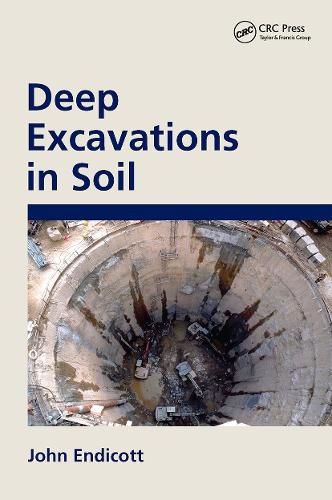Readings Newsletter
Become a Readings Member to make your shopping experience even easier.
Sign in or sign up for free!
You’re not far away from qualifying for FREE standard shipping within Australia
You’ve qualified for FREE standard shipping within Australia
The cart is loading…






The book describes the theory and current practices for design of earth lateral support for deep excavations in soil. It addresses basic principles of soil mechanics and explains how these principles are embodied in design methods including hand calculations. It then introduces the use of numerical methods including the fundamental beam on springs models, and then more sophisticated computer programmes which can model soil as a continuum in two or three dimensions. Constitutive relationships are introduced that are in use for representing the behaviour of soil including a strain hardening model, and a Cam Clay model including groundwater flow and coupled consolidation.
These methods are illustrated by reference to practical applications and case histories from the author’s direct experience, and some of the pitfalls that can occur are discussed. Theory and design are strongly tied to construction practice, with emphasis on monitoring the retaining structures and movement of surrounding ground and structures, in the context of safety and the Observational Method. Examples are presented for conventional Bottom-up and Top-down sequences, along with hybrid sequences giving tips on how to optimise the design and effect economies of cost and time for construction. It is written for practising geotechnical, civil and structural engineers, and especially for senior and MSc students.
$9.00 standard shipping within Australia
FREE standard shipping within Australia for orders over $100.00
Express & International shipping calculated at checkout
The book describes the theory and current practices for design of earth lateral support for deep excavations in soil. It addresses basic principles of soil mechanics and explains how these principles are embodied in design methods including hand calculations. It then introduces the use of numerical methods including the fundamental beam on springs models, and then more sophisticated computer programmes which can model soil as a continuum in two or three dimensions. Constitutive relationships are introduced that are in use for representing the behaviour of soil including a strain hardening model, and a Cam Clay model including groundwater flow and coupled consolidation.
These methods are illustrated by reference to practical applications and case histories from the author’s direct experience, and some of the pitfalls that can occur are discussed. Theory and design are strongly tied to construction practice, with emphasis on monitoring the retaining structures and movement of surrounding ground and structures, in the context of safety and the Observational Method. Examples are presented for conventional Bottom-up and Top-down sequences, along with hybrid sequences giving tips on how to optimise the design and effect economies of cost and time for construction. It is written for practising geotechnical, civil and structural engineers, and especially for senior and MSc students.